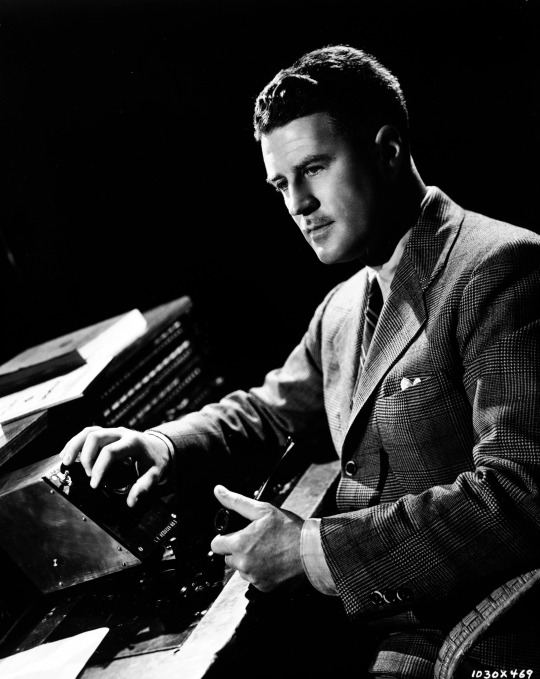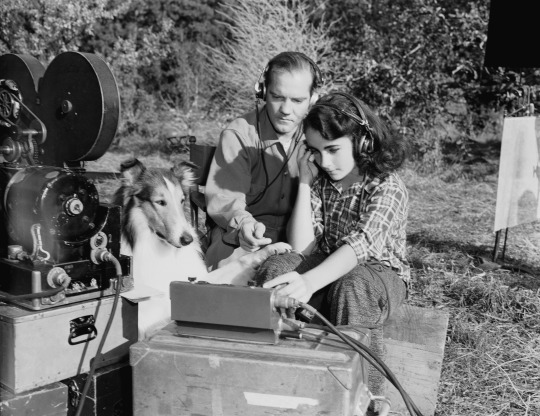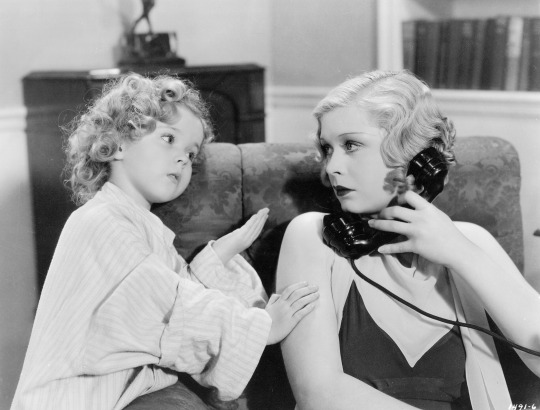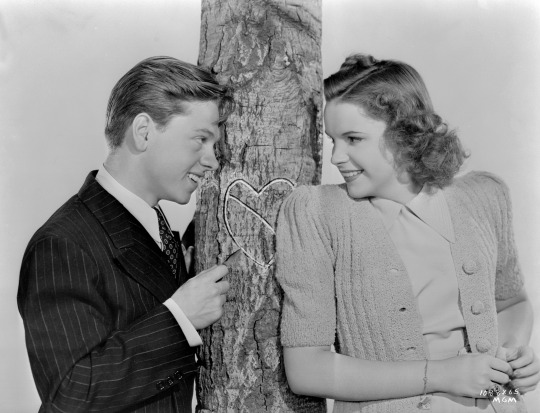#jessica pickens

His name in the credits is as synonymous with Metro-Goldwyn-Mayer as hearing Leo the Lion roar before a film. Douglas Shearer was MGM’s head sound designer and recording director. By some, Douglas Shearer could simply be reduced to the brother of actress Norma Shearer. He moved to Los Angeles from Canada to join his mother and two sisters (after not seeing them for four years). Norma became not only one of MGM’s movie queens but one of the biggest global stars of the 1930s.
The transition from silent to talking pictures was an uncertain time in Hollywood. Shearer, an engineer by trade, muscled his way in and with his significant inventions, transformed talking pictures and filmmaking. “During his more than 40 years with MGM, he contributed more than any other man in Hollywood to the perfection of motion picture sound,” said writer and filmmaker, Ephraim Katz. But Douglas paved his own way and was conscious of the implications of nepotism. He went so far as living by himself away from his family, making a point that he was not connected to Norma. He didn’t need Norma’s star power, though it probably didn’t hurt in making initial connections.
Shearer’s first job in Hollywood was in the prop room, where he called himself “assistant animal guy,” as he wrangled several pigeons, cows, chickens and pigs, according to film historian Gavin Lambert. While working with the livestock, it was the discussion of sound that peaked Shearer’s interest. He pitched an experiment to MGM of adding sound to a film trailer, and in turn, was given a job in special effects at MGM. “I had enough background in industrial plants and mechanicals so that I thought the competition wouldn’t be too tough,” Lambert quotes Shearer.

By 1928, Shearer was the head of MGM’s sound department — a position he held for 40 years. “Overnight, I was the one-man sound department,” Lambert quotes Shearer. MGM was the last major studio to make the conversion to sound, and they relied heavily on Shearer. He visited Bell Laboratories in New Jersey to study the latest equipment and hired a team.
With “more stars than there are in heaven,” MGM’s look was important, but so was its sound. “Douglas gave it a clarity and spaciousness unequalled at the time,” Lambert wrote. But Shearer didn’t just learn how to produce sound in the early days, he had to eliminate extraneous sounds. The cameras of the late-1920s were loud, so his team developed a quieter camera. He also faced issues of microphone placement, which was solved by creating a moving microphone on the boom to move with the actors, according to film historian Charles Foster.
Shearer created other innovations that became industry standards and landmarks, such as:
- The first lion’s roar that was heard behind the MGM logo.
- Shearer suggested synchronized singing with already recorded music for THE BROADWAY MELODY (’29), which became standard procedure with the playback system.
- He electronically created Tarzan’s famous yell.
- Shearer was able to “retouch” singing. For example, he would adjust the soundtrack frame by frame if a singer like Jeanette MacDonald went flat in the high-note range.

With a total of 14 Academy Awards, Shearer was awarded seven competitive awards from 1930 to 1958, ranging from Best Sound, Recording to Best Special Effect and seven others for technical and scientific achievements. He received the award for Best Sound the first year it was introduced for the film THE BIG HOUSE (’30).
Always innovative, Shearer’s projects took him outside of sound as well. He developed an improved system of color process photography. He also worked on the 65mm big screen look for BEN-HUR (’59).
During World War II, he took a hiatus from films to help the government. Shearer helped with the research and development of radar and devices that determine when and where nuclear explosions take place, according to his New York Times 1971 obituary. When President Roosevelt offered Shearer a civilian award for his work, this was one accolade he declined. “I didn’t do it for the personal glory,” Shearer told Roosevelt. “I did it to help save lives and get the war over and done with.”
Though Shearer is considered by many one of the most influential figures of Hollywood history, it’s those in front of the camera, like his sister Norma, that are better remembered today. In a 1963 interview, actor Spencer Tracy noted that Shearer was the only person he knew to have a plethora of Academy Awards and to never be seen on screen. “He has made many stars by his achievements … I wonder where I would have been today if it wasn’t for the genius of this man,” Tracy said. “He is a star himself, but he will never admit it.”

It can feel a little awkward when a child is told they did a better job at work than an adult. That was the case with the Academy Awards at least. At 9 years old, Jackie Cooper was the first child nominated for a Best Actor at the 4th Annual Academy Awards. Nominated for SKIPPY (’31), Cooper was competing against Richard Dix, Fredric March, Adolphe Menjou and Lionel Barrymore. It was Barrymore who took home the award that night for his performance in A FREE SOUL (‘31).
Three years later, 6-year-old Shirley Temple looked like a serious contender for a Best Actress nomination at the 7th Academy Awards. This same year, there was heartburn that Bette Davis hadn’t received an official nomination for OF HUMAN BONDAGE (’34). As a compromise, Temple’s autobiography notes that a special Juvenile Academy Award was created, “In grateful recognition of her outstanding contribution to screen entertainment during the year 1934.” Claudette Colbert took home the Best Actress award that year for IT HAPPENED ONE NIGHT.
The juvenile statue awarded to the young actors was half the size of the regular Academy Award; standing about seven inches tall. Temple was the first to receive an award that was presented 10 times to 12 honorees over the next 26 years. The juveniles ranged in ages 6 to 18.
Shirley Temple, 1934 at the 7th Annual Academy Awards

As Temple sat bored at the Academy Awards, she was surprised to hear her name announced during the ceremony. Host and humorist Irvin S. Cobb called her “one giant among the troupers.” As she grabbed her miniature-sized award, she asked, “Mommy may we go home now?” according to her autobiography. “You all aren’t old enough to know what all this is about,” Cobb told Temple. Shirley’s mother told her that she received the award for “quantity, not quality,” because Temple starred in seven films in 1934.
In 1985, Temple received a full-sized award, as she felt the juvenile actors deserved a regulation-sized award like everyone else, according to Claude Jarman, Jr.’s autobiography.
Mickey Rooney and Deanna Durbin, 1938 at the 11th Annual Academy Awards:
The second time the special award was presented was to two juvenile actors: Mickey Rooney, 18, and Deanna Durbin, 17. They received the award for “their significant contribution in bringing to the screen the spirit and personification of youth and as juvenile players setting a high standard of ability and achievement.”
“Whatever that meant,” Rooney commented in his autobiography on the award.
This was Durbin’s only recognition from the Academy. The following year, Rooney received his first adult nomination for BABES IN ARMS (’39). In total, he received four other competitive awards as an adult, and received one Honorary Award in 1983 in recognition of “50 years of versatility in a variety of memorable film performances.”
Judy Garland, 1939 at the 12th Annual Academy Awards:

Judy Garland, 17, was presented her Juvenile Academy Award by her frequent co-star Mickey Rooney. Garland received her award for “her outstanding performance as a screen juvenile during the past year” for her performances in BABES IN ARMS (’39) and THE WIZARD OF OZ (’39). Garland wouldn’t be recognized with a nomination by the Academy again until her 1954 performance in A STAR IS BORN. Garland reported losing the Juvenile Award in 1958, and it was replaced by the Academy at her own expense.
Margaret O’Brien, 1944 at the 17th Annual Academy Awards
Margaret O’Brien, 7, received the Juvenile Academy Award “for outstanding child actress of 1944” for the film MEET ME IN ST. LOUIS (’44). When Margaret O’Brien received her Oscar, she said she wasn’t really that interested in it at the time. “I was more excited about seeing Bob Hope. I was more interested in meeting him than the Oscar that night,” she said, quoted by her biographer.
In 1958, O’Brien’s award was lost. Her housekeeper, Gladys, took the Juvenile Academy Award home to polish and didn’t return. A short time after, Gladys was put in the hospital for a heart condition and the award was forgotten. When Margaret reached out later about the award, the maid had moved, according to her biographer.
Nearly 40 years later, two baseball memorabilia collectors — Steve Meimand and Mark Nash— returned the award to O’Brien in 1995. The men had bought it at a swap meet in Pasadena, according to a Feb. 9, 1995, news brief in the Lodi New-Sentinel. “I never thought it would be returned,” she said in 1995. “I had looked for it for so many years in the same type of places where it was found.” In 2001, O’Brien donated her Oscar to the Sacramento AIDS Foundation.
Peggy Ann Garner, 1945 at the 18th Annual Academy Awards

After appearing in films since 1938, Peggy Ann Garner’s breakout role was in the film adaptation of A TREE GROWS IN BROOKLYN (’45). That year at the Academy Awards, 14-year-old Garner was recognized with the Juvenile Award “for the outstanding child actress of 1945.” It was an unexpected honor for Garner, who was confused why she was asked to sit in an aisle seat. She thought it was a mistake when her name was announced, according to Dickie Moore’s book on child actors.
Claude Jarman Jr., 1946 at the 19th Annual Academy Awards
Claude Jarman Jr. was plucked from his home in Knoxville, Tenn. and thrust into stardom when director Clarence Brown selected him for the lead role in THE YEARLING (’46). Jarman wrote in his autobiography that he gave a brief speech saying it was a thrilling moment and “This is about the most exciting thing that can happen to anybody.” However, later admitted that at age 12 the significance of the award escaped him. Following Shirley Temple’s example, Jarman also later received a full-sized Academy Award.
Ivan Jandl, 1948 at the 21st Annual Academy Awards

Ivan Jandl received the Juvenile Academy Award in his only American film, making him the first Czech actor to receive an Academy Award. At age 12, Jandl was recognized for his “outstanding juvenile performance of 1948 in THE SEARCH (’48).” The film was one of only five films Jandl starred in. Jandl was not permitted by the Czechoslovakia government to travel to the United States to accept his award, which was accepted on his behalf by Fred Zinnemann, who directed THE SEARCH.
Bobby Driscoll, 1949 at the 22nd Annual Academy Awards
Bobby Driscoll received the award for “the outstanding juvenile actor of 1949” after appearing in the film-noir THE WINDOW (’49), as well as his performance in the Disney film SO DEAR TO MY HEART (’48). “I’ve never been so thrilled in my life,” 13-year-old Driscoll said when he accepted the award.
Jon Whiteley and Vincent Winter, 1954 at the 27th Annual Academy Awards
Scottish actors Jon Whiteley, 10, and Vincent Winter, 7, co-starred as brothers in THE LITTLE KIDNAPPERS (’53). The co-stars were awarded for their “outstanding juvenile performances in The Little Kidnappers.” Whiteley’s parents wouldn’t let him attend the award’s ceremony, so it was mailed to him. “I remember when it arrived, hearing it was supposed to be something special, I opened the box and I was very disappointed. I thought it was an ugly statue,” Whiteley said in a 2014 interview.
Vincent Winter was also not present for the award, so Tommy Rettig accepted the award on behalf of both actors.
Hayley Mills, 1960 at the 33rd Annual Academy Awards

The last Juvenile Academy Award was award to Hayley Mills, 14, in 1960 for her role in POLLYANNA (’60). The award was presented by the first winner of the Juvenile Award, Shirley Temple. Mills was unable to attend, and it was accepted on her behalf by fellow Disney star Annette Funicello.
In a 2018 interview, Mills said she didn’t know she had received it until it arrived at her home. Mills was in boarding school in England at the time of the ceremony. “I didn’t know anything about it until it turned up. Like, ‘Oh, that’s sweet. What’s that?’ I was told, ‘Well, this is a very special award,’ but it was quite a few years before I began to appreciate what I had,” she said in a 2018 interview.
The Aftermath
Throughout the tenure of the honorary Juvenile Academy Award, other children were still occasionally nominated, including Bonita Granville, 14, for THESE THREE (’36); Brandon de Wilde, 11, for SHANE (’53); Sal Mineo, 17, for REBEL WITHOUT A CAUSE (’55) and Patty McCormack, 11, for THE BAD SEED (’56).
Once Patty Duke, 16, won the Academy Award for Best Actress in a Supporting Role in 1963 for THE MIRACLE WORKER (’62), the honor was discontinued. Following Duke, Tatum O’Neal, 11, received the award for Best Supporting Actress for PAPER MOON (’73).
In recent years, there has been discussion about bringing the award back. In a 2017 Hollywood Reporter article, the argument was made that after the discontinuation of the award, fewer children have been recognized by the Academy. The performance of Sunny Pawar in LION (2016) wasn’t nominated, which was viewed as a snub, according to a 2017 Hollywood Reporter article. Other children haven been nominated in major categories, like Quvenzhane Wallis for BEASTS OF THE SOUTHERN WILD (2012), which to date makes her the youngest nominee for Best Actress in a Leading Role, and Jacob Tremblay in ROOM (2015). But the last time a child has won a competitive award was Anna Paquin for THE PIANO (1993).

Being a child star may sound like a dream come true. But when Jackie Cooper became an adult, he quickly saw everything that he missed out on. “I don’t think our success as child actors is ever an advantage. It’s actually against us,” Cooper said in an interview. Starting out as an actor at age 7 in 1929, Jackie Cooper was a star by 1931 after the release of SKIPPY (’31). SKIPPY not only solidified Cooper as a star, but also proved he could tug at heartstrings when he turned on the tears. The role earned him an Oscar nomination and the distinction of being the youngest actor to do so until 1979.
With blonde hair, chubby cheeks and a pout, Cooper was dubbed “America’s Boy.” And though his characters seemed like the all-American child of the 1930s, Cooper’s home life was anything but. When he was two years old, his father John Cooper went out for a pack of cigarettes and never returned home. His mother Mabel became the financial supporter, traveling as an entertainer, while Cooper’s grandmother, Nonnie, took care of him. Cooper was not fond of Nonnie, according to his autobiography, but she is the reason he began acting. Because they were poor and Mabel was the only source of income, Nonnie and Cooper would seek work as movie extras — receiving $2 and a boxed lunch per day.
When Cooper became a successful child actor, money was no longer an issue at home. But he was under tremendous pressure. “The pressure to get the scene right, to learn the words, to act this way or that way, to smile or cry or look scared for the cameraman, to do a nice interview. The responsibility to work correctly for the director who tells you that if you don’t do a good job, he may get fired and he has three little babies at home who need to be fed,” Cooper wrote in his autobiography. He was often told to “be nice” and when Nonnie was on set, she held over him that his mother was ill. However, as a child, Cooper thought he was happy. It was as an adult that he described himself as a “child who grows up empty and doesn’t realize it until it’s too late.”

“Later people tried to rationalize to me that I had gained more than I had lost by being a child star … But no amount of rationalization, no excuses, can make up for what a kid loses — what I lost — when a normal childhood is abandoned for an early movie career,” Cooper wrote.
Cooper also didn’t have basic life skills, which he soon realized after Mabel died when he was 19. While he had money and career experience, he had no friends, didn’t receive an adequate education and had trouble reading as an adult because he wasn’t properly trained. But most of all, Cooper was given no advice on money or finances. “Child stars aren’t taught anything about money, and that is one of the unsung tragedies of the child star trade,” Cooper wrote in his autobiography. As a child, Cooper was given an allowance by his mother, and after Mabel died, Cooper’s uncle, director Norman Taurog, handled Cooper’s finances — even after he was married and while he fought in World War II. Cooper was given a checkbook and never knew the balance of his account.
Cooper said the war made him grow up, and he credited his last wife, Barbara, for giving him life experiences he never had before he met her. As an adult, Cooper continued to act and also direct. Because of his own experiences, Cooper didn’t like to work with children. “They should be roughhousing,” he said. “They should not be made to drain themselves.”
